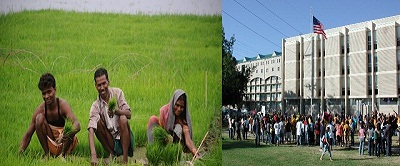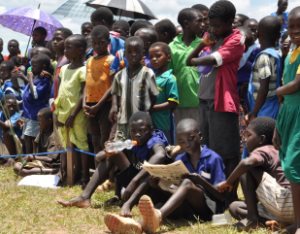Should rural people be allowed same educational opportunities as urban people?
Does our location often dictate quality of our education? In rural areas of Latin America education is extremely poor. Is it faulting of government, teachers, amount of available materials, or apathy on part of people? This goal of this literature search was to identify problems with rural education in Latin America also highlight how those problems can be solved.
Rural vs. Urban Economics:

1) All Latin American students should be attending school every day.
2) In Latin America quality of education depends on where one lives.
3) Northeast Brazil has become example for rural education at its worst.
Sources often cite economics as key downfall of education in this region of world, claiming that a lack of investment by government has lead to stagnation of education. With education free also compulsory now all Latin American students should be attending schools on a daily basis regardless of where they live. However large amount of rural children are still unable to access school. Quality of education depending on one's location has become major issue.
Providing quality education to Latin America's rural areas:
It is a prospect of new technologies also innovative private-public partnerships that disrupt status quo in education in Latin America. In past, governments struggled to find resources for education also their impoverished citizens were unable to invest in their future. Education spending - as a percentage of GDP - was very low across region for decades.
At present, governments are directing better resources towards education particularly to primary education, thanks to their rising incomes. Private sector is hammering in more capital too particularly in higher education, responding to a more open also competitive environment. It is all happening while a healthy vulnerable middle class rises up, eager for progress from poverty.
However, progress is slow also educational resources also spending is still far below necessary levels. Funds in region are invested inadequately also are not being funnelled into projects to improve quality of education. For example: in Butean regions of Peru, regional governments receive direct transfers from taxes collected on local oil also mining operations. Some of these regions are sitting on huge piles of cash, however very little of surplus is invested adequately. Visualize what could be achieved if this surplus was directed into education?

Regional governments however are trying to break status quo also have come up with voucher systems, which could have a significant impact. Voucher systems rely on investment of private partners to provide education to young graduates from poorest rural areas.
Currently, it is involved in such a voucher programme in Peru - named Beca 18 - which provides vocational careers to high school graduates selected from remote also volatile parts of Peru. However, current potential is limited by inefficiency as students must be identified, evaluated also picked in their remote home towns also then selected candidates must move to urban locations or even to capital on coast.
It can only be imagining how far initiatives such as Beca 18 could extend if they were paired with scalable processes also most advanced learning technologies. Candidates from most remote areas could be educated in their own communities also could achieve same levels of proficiency as middle class urban students.
Resources also political willingness are available, for there to be a real escalation of growth, public actors must redesign their systems to measure quality provided by private operators. Also latter must deploy most advanced processes also technologies to lower costs also standardize learning experience.
By extending access to a quality-based education, these public-private efforts would strengthen safety net, providing emerging middle class with a strong stabilizing factor, also poorest also most vulnerable with an opportunity for social mobility.
Other Solutions:
Other solutions do exist - it has suggested that teachers be held responsible to their local communities, especially in rural villages. His suggestion stems from problem that in many villages in Mexico, school teacher is unreliable, habitually not showing up for classes. Communities would provide textbooks also instruction guides for teacher also teacher would adjust school schedules so that attendance will improve (changing school times or school days so that students may help their family with farming) also teacher is reliant upon community for support also salary. Another study proposes community classes which are organized where children live. One Tutor is in charge of upwards of thirty students in a multi grade classroom. This approach, similar to Escuela Nueva, limits amount of teachers required, although teacher quality is taken care of as these teachers have left secondary school also have been trained in this formal program. Both of programs listed above attempt to bridge a gap between teachers also community, hoping to gain support also recognition from all parties involved.
Conclusion:
Literature available on rural education in Latin America is vast. Organization of literature is a necessity in order to be able to analyze sources also their arguments. While sources differ on solutions, it has become strikingly clear that rural education in Latin America must change also alternate in order to bring it up to speed with education in urban areas.